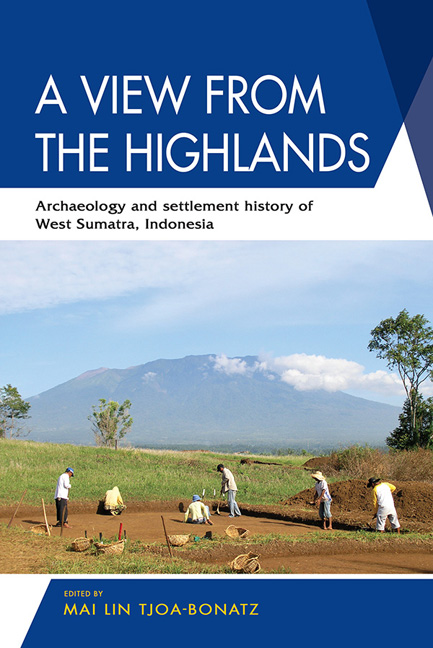Book contents
- Frontmatter
- Contents
- List of Tables
- List of Maps
- List of Figures
- List of Colour Plates
- Abbreviations and Acronyms
- Preface and Acknowledgements
- About the Contributors
- 1 Research History, Methods, and Objectives
- 2 Early Histories: Historiography and Archaeological Surveys
- 3 Excavations
- 4 Material Culture Studies
- 5 Conclusion
- Bibliography
- Index
- Plate section
Preface and Acknowledgements
Published online by Cambridge University Press: 24 January 2020
- Frontmatter
- Contents
- List of Tables
- List of Maps
- List of Figures
- List of Colour Plates
- Abbreviations and Acronyms
- Preface and Acknowledgements
- About the Contributors
- 1 Research History, Methods, and Objectives
- 2 Early Histories: Historiography and Archaeological Surveys
- 3 Excavations
- 4 Material Culture Studies
- 5 Conclusion
- Bibliography
- Index
- Plate section
Summary
This volume concerns the historical archaeology of Sumatra, whose past has been neglected by researchers in comparison with other islands of the Indonesian archipelago such as Java, Bali, and Sulawesi. In particular, historians have assumed that highland Sumatra played a marginal role in the formation of the riverine trading kingdoms such as Melayu and Srivijaya in the seventh to the fourteenth centuries, places that were well-known to foreign traders and are better documented. However, little is known about the origins of the settlement processes that created the unique ethnic and cultural diversity of Indonesia's highland regions, or the demographic, political, and cultural developments that followed. This book analyses the rise of the settlement system in the heartland of the Minangkabau region in the highlands of West Sumatra. Historians have studied European sources and indigenous writings (Dobbin 1975; 1983; Drakard 1990; 1999; 2008–9), but the pre-colonial settlement history is poorly understood. An examination of the settlement and material culture from the fourteenth to the seventeenth centuries reveals growing social complexity in the region.
At the centre of this research lies a mountain called Bukit Gombak. Excavations suggest its identification with the royal centre of Adityavarman, the last Buddhist king of Sumatra, in Tanah Datar, a fertile plain in the highlands of West Sumatra. Buddhist artefacts and stone inscriptions document his reign (c. 1347–75), which also produced more epigraphic material than any other ancient Indonesian polity. Drawing upon recent archaeological investigations, this volume explores the regional settlement pattern arising from Adityavarman's highland interregnum, and provides the first attempt to place the archaeological remains and the landscape of Tanah Datar in a culturalhistoric synthesis.
The book explores the role of upland zones in the development of complex settlement systems in Southeast Asia, based on archaeological evidence and a close examination of the material culture of prestate and early state systems in the highlands of Sumatra during the fourteenth century. This process occurred later than in the lowlands but was contemporaneous with developments in other highland regions in Southeast Asia. The research is important for understanding a core cultural region of West Sumatra, today the homeland of the Minangkabau, but it also facilitates evaluation of the settlement pattern, technology, cultural affiliation, and external links of Sumatra's highland in the development of precolonial Indonesia.
- Type
- Chapter
- Information
- A View from the HighlandsArchaeology and Settlement History of West Sumatra, Indonesia, pp. xvi - xxivPublisher: ISEAS–Yusof Ishak InstitutePrint publication year: 2019

